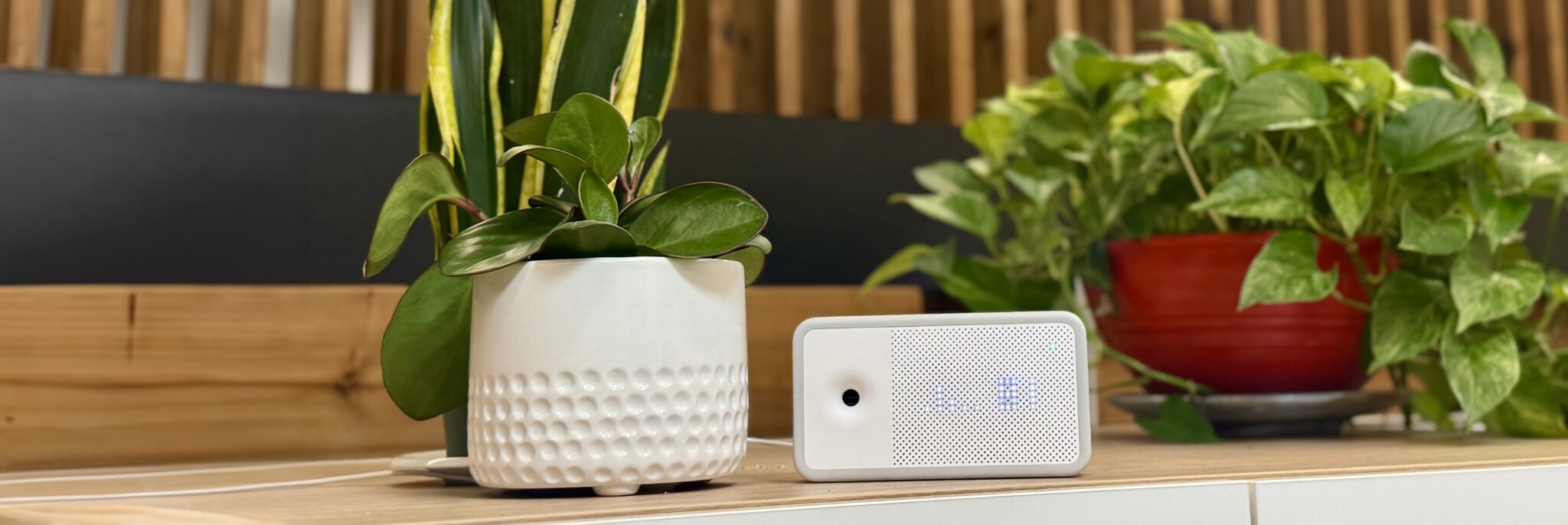At LGA, designing healthy buildings isn’t just something we advocate for our clients—it’s something we prioritize in our own workspace. One of the ways we ensure our team breathes clean air is by employing Awair air quality monitoring systems in our office. We often get questions from visitors when they see these devices: What is that? Since air quality plays a crucial role in health, comfort, and productivity, we thought it was a great time to explain why we use air monitoring technology and how it helps us create a healthier environment.
What Is Air Quality Monitoring?
Air quality monitoring systems track real-time environmental factors, helping us optimize our workspace for health and comfort. These systems continuously measure key air quality indicators:
- Temperature (Optimal range: 68-77°F)
- Humidity (Optimal range: 40-50%)
- Carbon Dioxide (CO2) (Should remain below 600 ppm)
- Total Volatile Organic Compounds (TVOCs) (Should stay below 300 ppb)
- Particulate Matter (PM2.5) (Should remain under 12 µg/m³)
Each of these factors contributes to an overall air quality score, offering a quick snapshot of indoor air health. If any levels become suboptimal, we can take corrective action—whether by adjusting ventilation with our garage doors, running one of our two air purifiers, or modifying humidity levels. Maintaining proper humidity is especially challenging in the desert, where dry air makes it difficult to achieve an optimal balance. In fact, this is often our biggest hurdle in maintaining good indoor air quality.
Why Does Indoor Air Quality Matter?
In multiple fireside chats we’ve hosted with internationally recognized health and design expert Dr. Esther Sternberg (Creating Healing Spaces / Well At Work – Creating Wellbeing in any Workspace) , she has shared valuable insights on creating healthier workspaces. She emphasized how fresh air and humidity impact overall well-being, performance, and happiness. Studies show that poor air quality can lead to increased sick days, lower productivity, and higher turnover rates. By monitoring and maintaining optimal air quality, we create a workspace where our team feels their best and can do their best work.
One easy tip Dr. Sternberg shared was to turn on a fan while working at your desk for extended periods—this helps circulate air and prevent carbon dioxide buildup from breathing in the same space. She also highlighted the importance of humidity, especially in our dry climate. One simple way to increase humidity is by keeping houseplants—plants like peace lilies, ferns, and areca palms naturally add moisture to the air through transpiration. If you’ve ever walked into our office, you’ve probably noticed our love of plants!
How We Maintain a Healthy Office
Indoor air quality fluctuates based on local climate, building insulation, and HVAC performance. Our monitoring systems allow us to stay proactive rather than reactive by continuously tracking these factors. Using a simple color-coded system, they provide real-time feedback, alerting us when adjustments are needed. They even offer specific tips for improving air quality based on the indicator score. Some systems also track ambient light and noise—factors that, while not part of the air quality score, play a crucial role in overall indoor environmental quality.
Our Commitment to Healthier Spaces
We don’t take air quality lightly—whether in our office or in the buildings we design. By integrating air quality monitoring into our daily work environment, we reinforce our commitment to creating spaces that support health, happiness, and productivity. After all, a workspace that fosters well-being leads to fewer sick days, greater job satisfaction, and a more engaged team.
So, the next time you visit LGA and spot one of our air monitoring devices, you’ll know exactly what it is—and why it matters.
